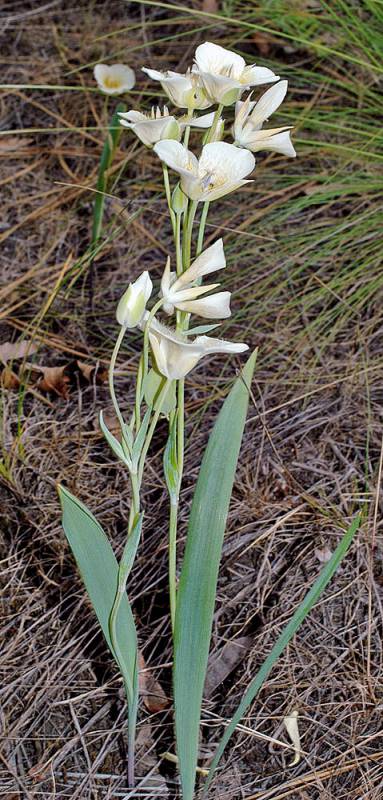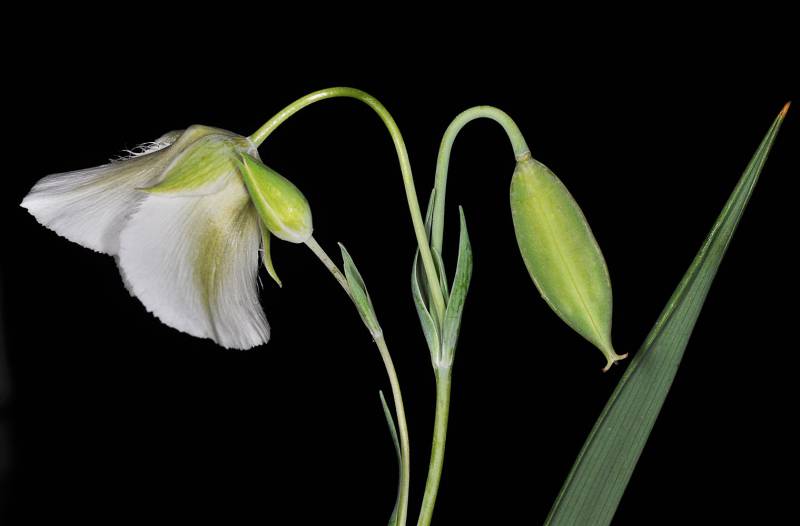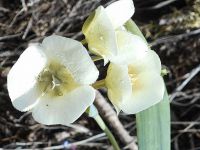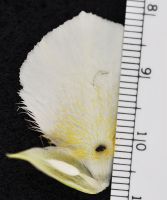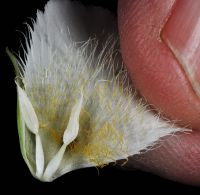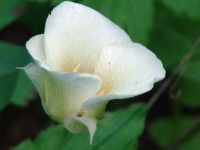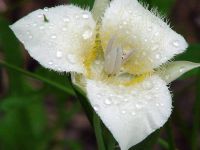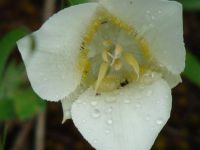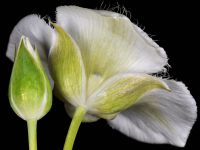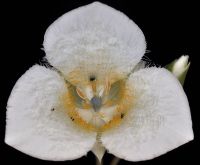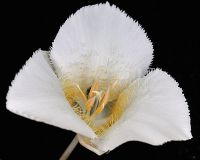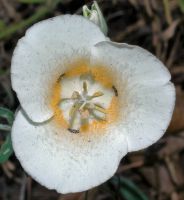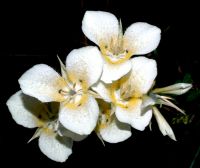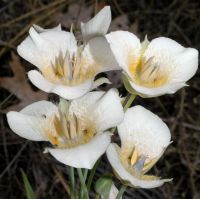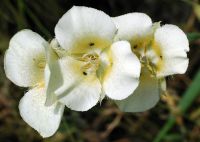Distribution: Occurring east of the Cascades crest in the northeast counties of Washington; southeastern British Columbia to northeastern Washington, east to southeastern Alberta, northern Idaho, and western Montana.
Habitat: Dry meadows to sparse or deep woodlands.
Flowers: June-July
Origin: Native
Growth Duration: Perennial
Conservation Status: Not of concern
Pollination: Bees, beetles
Perennial herb from a deep-seated bulb, the stem 1-3 dm. tall, stout and erect.
Basal leaf flat, 1-3 dm. long and 5-15 mm. wide, tapering at both ends.
Umbel 1- to 5-flowered, the flowers yellowish-white, sometimes penciled with purple, erect or spreading on stout pedicles which become deflexed in fruit; sepals 3, shorter than the petals, oblong-lanceolate, pointed, glabrous; petals obovate to oblanceolate, clawed, fringed laterally and bearded on the lower half above the claw; gland small, depressed, circular in outline, bordered below with a dark, fringed membrane; ovary 3-winged, with a short style and trifid stigma.
Fruit elliptic, acute, 3-winged, nodding.
Publication: J. Linn. Soc., Bot. 14: 305. 1874.
PNW Herbaria: Specimen records of Calochortus apiculatus in the Consortium of Pacific Northwest Herbaria database
WA Flora Checklist: Calochortus apiculatus checklist entry
OregonFlora: Calochortus apiculatus information
E-Flora BC: Calochortus apiculatus atlas page
CalPhotos: Calochortus apiculatus photos


